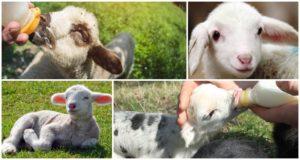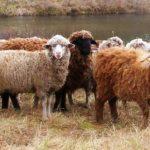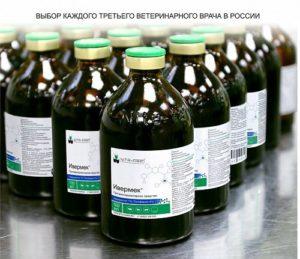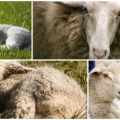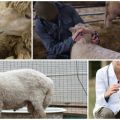Symptoms of infectious enterotoxemia in sheep, methods of treatment and prevention
Enterotoxemia, or anaerobic dysentery of sheep, is a toxic infection caused by anaerobic bacteria. The disease is manifested by serious nervous disorders, hemorrhagic enteritis, indigestion, general intoxication of the body. Sheep of all breeds and age groups are susceptible to enterotoxemia. If treatment is not started on time, the infection will inevitably lead to the death of agricultural animals.
The causative agent and causes of the disease
Enterotoxemia in sheep is caused by rod-shaped, gram-negative anaerobic bacteria Clostridium perfringens type C, D, less often A. Clostridia secrete toxins. In the external environment, they form capsules. On nutrient media, after penetration into the body of animals, spores form. Bacteria in spore forms in soils remain virulent for up to 3-4 years. Withstand heating up to 85 degrees, boiling for 13-15 minutes. The death of clostridia is caused by a 5% formalin solution, bleach.
The main source of enterotoxemia is sick individuals, latent (hidden) carriers, animals who have recovered. Transmission factors include bedding, animal care equipment, and contaminated household items.
Important! Infection of sheep with anaerobic dysentery occurs by contact, alimentary way.
Causes of enterotoxemia in sheep:
- unfavorable conditions of detention (high humidity, lack of ventilation, non-compliance with the temperature regime);
- feeding with rotten, moldy, poor-quality feed, wet hay;
- a sharp transition from one diet to another;
- eating a lot of wet or young juicy grass;
- the predominance of concentrated feed in the diet;
- early weaning of lambs from lambs;
- autoimmune diseases;
- protein, mineral deficiency, vitamin deficiency;
- helminthiases (helminthic invasions).
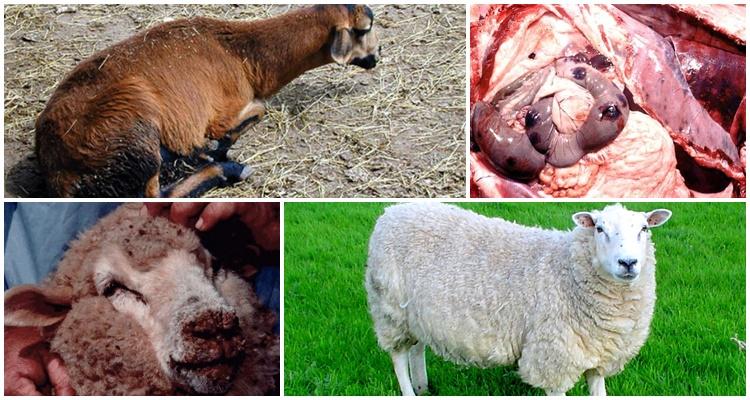
The development of infection in sheep is facilitated by acute, chronic pathologies of the gastrointestinal tract, secretory dysfunction, as well as a sharp transition from stall to grazing. Newborn lambs are infected from lactating lambs.
Signs and symptoms
Once in the body of animals, clostridia produce toxins, actively multiply in the cells of the tissues of the digestive tract. The waste products of bacteria lead to the formation of ulcers, erosions, necrotic foci, and internal hemorrhages. The liver, intestinal mucosa, serous membranes, and vascular endothelium are affected. Their permeability increases. The secretory function, intestinal peristalsis, the work of internal organs are impaired.
Important! Enterotoxemia in sheep is most often diagnosed by veterinarians in the spring and summer, less often in the fall, in winter.The infection is seasonal.
The main symptoms, manifestations of enterotoxemia:
- refusal of feed;
- sudden weight loss;
- restless behavior followed by oppression;
- impaired growth, development of young animals;
- change in heart rate;
- sudden loss of coordination;
- inadequate response to external stimuli;
- loss of consciousness;
- temperature rise by 1-3 degrees, fever;
- teeth grinding;
- nervous disorders;
- salivation, accumulation of foam in the corners of the oral cavity;
- intestinal disorders;
- profuse diarrhea;
- pallor, cyanosis of the mucous membranes;
- violation of respiratory function;
- muscle spasms, cramps.
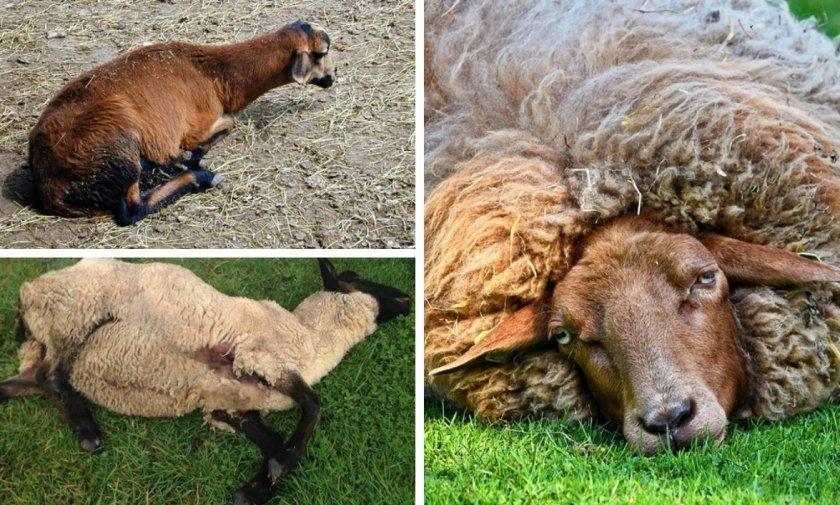
In newborn lambs, individuals aged from 2-3 weeks to one month, enterotoxemia proceeds in an acute form. The first symptoms appear 3-5 hours after infection. In adult animals, an acute, hyperacute, less often chronic course of the disease is noted. The first signs of infection are noticeable 3-4 days after infection. Death occurs on the 7-10th day.
In some cases, enterotoxemia develops suddenly in fattening sheep. Animals die without any manifestations of the disease. The lethal outcome is caused by severe intoxication, dehydration, paralysis of the respiratory system. Mortality from enterotoxemia occurs in 85-95% of cases.
Diagnostic measures
When making a diagnosis, take into account the history data, external manifestations, the epizootic situation in the region for enterotoxemia. A more clear picture can be obtained after laboratory studies, pathological changes. Differential diagnosis is carried out, since the symptoms of enterotoxemia are similar to peptic ulcer disease, intestinal infections, bradzot, listeriosis.
How to treat infectious enterotoxemia
With an acute, hyperacute form of enterotoxemia in sheep, treatment is difficult. If the disease is chronic, veterinarians use complex antibiotics, tetracycline antibacterial agents for intramuscular injections, sulfa drugs. The duration of therapy is 4-5 days. The dosage of drugs is selected individually, depending on the age, general condition of the animals. Good results are noted after therapy with bivalent hyperimmune sera, which are effective against anaerobic bacteria.
Important! Infected animals are placed in quarantine zones, isolated from healthy sheep. Healthy sheep in contact with sick individuals are treated with antitoxic serum in order to prevent infection.
Additionally, immunostimulants, probiotics, symptomatic drugs are prescribed to normalize digestion, the work of internal organs, and eliminate clinical manifestations. During treatment, it is necessary to carry out a number of disinfecting measures, normalize conditions of detention, and eliminate factors that contribute to the further spread of infection. After the end of therapy, a comprehensive examination of the ill individuals is carried out. Material is sent to the laboratory for bacteriological research.
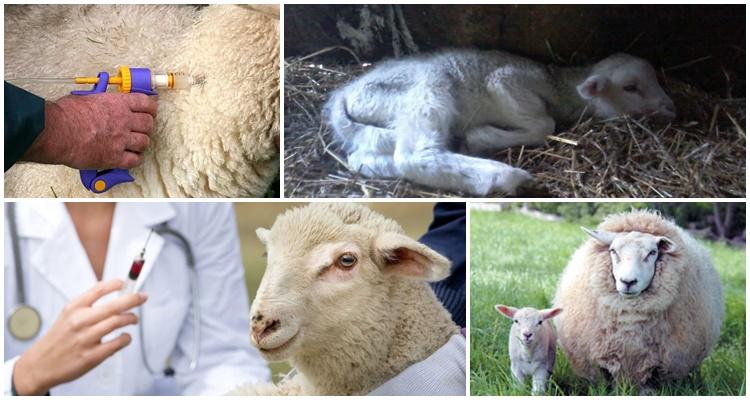
What can be the consequences
Anaerobic dysentery can cause disturbances in digestive processes, provoke chronic cardiovascular, nervous pathologies. The recovered young growth lags behind in growth, development, poorly gaining weight.
Important! If you do not start treatment, anaerobic dysentery is fatal in 100% of cases.
Recovered sheep develop specific immunity lasting up to 12-15 months.
Prevention
In livestock complexes located in regions with an unfavorable environment for enterotoxemia, a routine comprehensive vaccination against infectious diseases is mandatory. The vaccination schedule is set by the veterinarian.In order to prevent infection of sheep with anaerobic dysentery, it is necessary to monitor the quality of feed, systematically disinfect equipment, and periodically change the litter. It is necessary to monitor the parameters of the microclimate in rooms with animals.
To increase the resistance, the immune potential of sheep, the diets are supplemented with vitamin and mineral premixes, additives. It is prohibited to export sheep from farms unfavorable for this infection, forced slaughter, regrouping animals inside livestock complexes, and skinning sick animals. The corpses of sheep, lambs, who died from enterotoxemia, must be disposed of.
